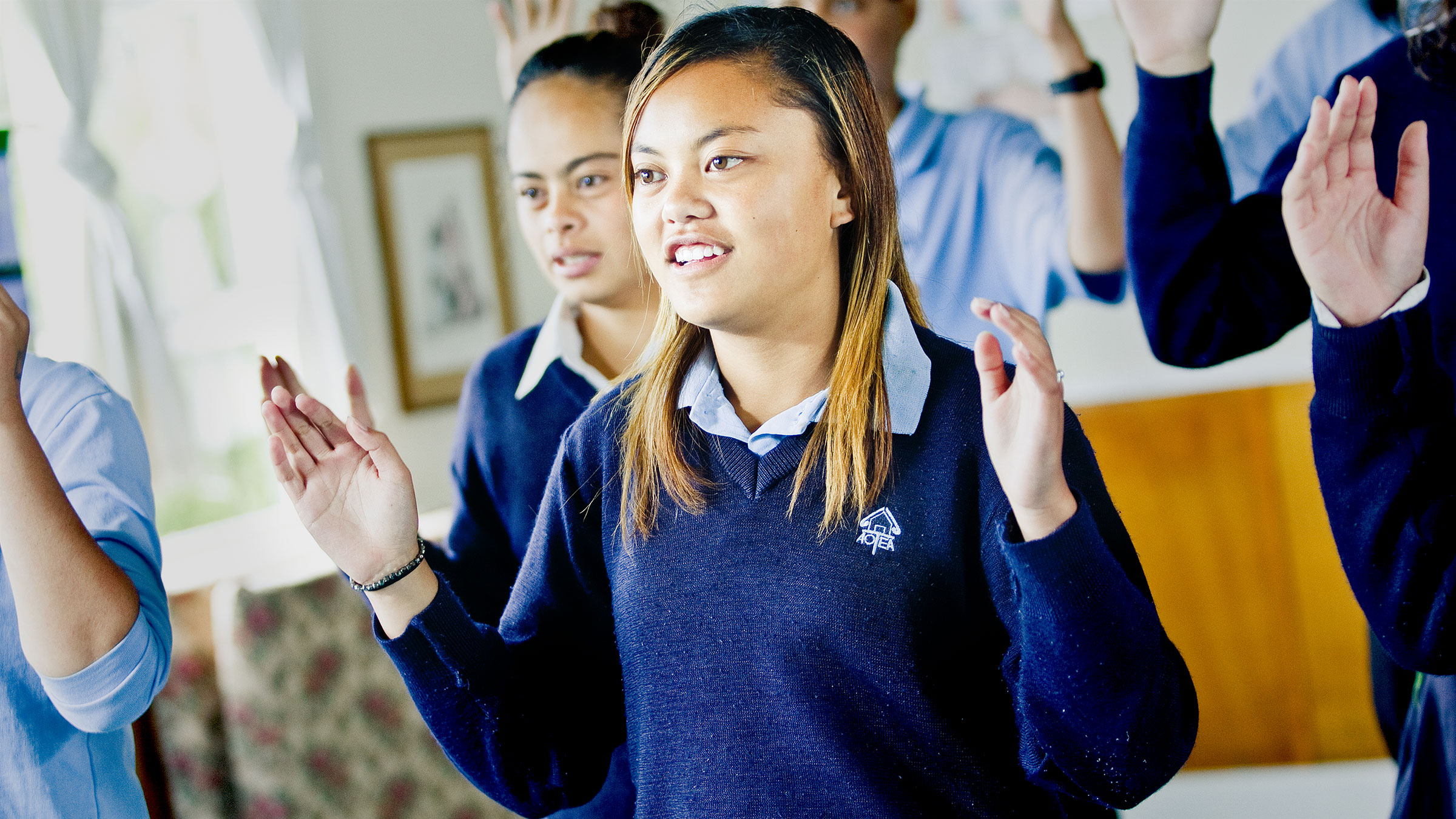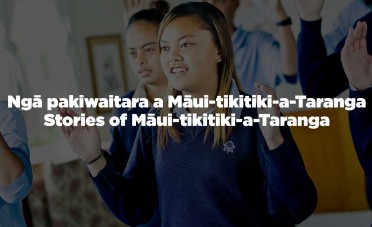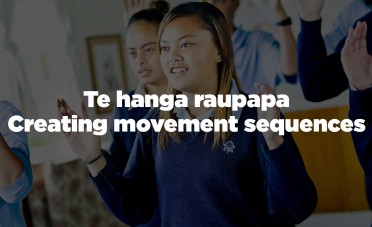Tauira whakaraka Stepping patterns
Explore and identify tauira whakaraka (stepping patterns) used in kapa haka.
Exploring te ao kori — Activity collections
This resource is part of a series within the Exploring te ao kori activity collections called Te kori me te puoro | Music and movement.

Intended outcomes
Ākonga:
- explore vocal sounds, body percussion, and found sounds and apply to suit the context
- explore and identify different stepping patterns used in kapa haka
- experience and describe the benefits of regular physical activity in whakamahana tinana (warm-up) for te ao kori activities
- initiate and express dance ideas based on words about flight
- perform takahi stepping patterns in time to music
- combine and contrast different stepping patterns used in kapa haka
- identify and use tikanga when learning and using stepping patterns
- develop complex stepping pattern sequences
- demonstrate an understanding of the tikanga relating to the pūkeko step pattern
- identify the characteristics of the pūkeko and explore the step patterns of the pūkeko through locomotive movement.
Suggested approach
Te hīkoi a te pūkeko | Pūkeko stepping pattern
The pūkeko step is one of the steps that is used to exhibit caution when the wero (challenge) is carried out for manuhiri (visitors, guests) upon their arrival at a marae.
Ākonga can create their own music soundscapes, using vocal, body percussion, and found sounds.
Ākonga view videos or pictures of pūkeko that depict their movements. As a class, they can discuss the characteristics of the pūkeko, such as, shape, colour, where it lives, what it eats, how it moves. They move freely to explore ways of moving that imitate the movements of the pūkeko.
For the purposes of this activity, the stepping pattern should be performed as follows:
- Starting stance – Stand front on, hands on hips, (males' fingers pointing forwards, females' fingers pointing back), the right foot is slightly to the rear and side of the left foot. Bend the knees slightly and come up onto the balls of the feet.
- Maintaining balance through the central, vertical axis and a forward facing body position, lift the right foot up in a movement that includes lifting the heel to behind the left knee, then place the right foot forward onto the ground in a careful and cautious manner.
- Maintaining balance and a forward facing body position, lift the left foot up in a movement that includes the lifting of the heel behind the right knee, then place the left foot forward onto the ground in a careful and cautious manner.
- Repeat to allow forward movement.
- Once confidence and competence has been established with this movement, the movement can incorporate a swivel, left and right on the ball of the front foot, or both feet once the front foot has been placed.
Directional commands can be given in te reo Māori as ākonga explore the pūkeko movement while moving forwards and backwards and then to the left and right.
Ākonga can execute the pūkeko step using different relationships to a partner, for example, facing each other and approaching, side by side, following the leader. They can be positioned in line formations (ngaru/wave) and move in unison across the space.
In groups of four to six, ākonga practise the pūkeko stepping pattern to create a movement sequence, using these directional pathways in space.
Ākonga view pictures or video clips of the pūkeko in flight and brainstorm movement words that relate to flight – rere topa (swooping), rere hāro (soaring), rere āmio (circling), rere tūpou (diving), rere piko (curving), rere tītaha (swerving).
In pairs or small groups of three or four, ākonga choose three of these words and create a movement sequence that represents these words and also incorporates the stepping pattern of the pūkeko. Use customary and contemporary Māori music or use native bird song to create a suitable environment.
Te hīkoi a te takahi | Takahi stepping pattern
Teach the takahi step and apply this to different pathways, directions, and speeds.
Ākonga experiment with jumping on the spot to invent four different ways of making jumping off two feet look different. If no ākonga demonstrates the takahi step, then the teacher can introduce it as another form.
The takahi step is a jump off the balls of both feet, with the right leg being flicked up as the left travels forward, followed by a run performed off the ball of the foot with a flicking of the rear leg.
Ākonga should be allowed to experiment with and practice these takahi movements to develop balance – stationary to start with, then small movements, leading to bigger actions.
Using the takahi step, ākonga travel freely inside a designated area to practice these actions. Ākonga can then respond to directional commands given by the teacher or other ākonga.
Using grid formations, the class can be divided up into four groups. Two of the groups can use the takahi step and running to move diagonally across the grids. The two waiting groups should perform the takahi step on the spot until it is time for them to travel across the grids themselves.
As the groups become proficient with this, they can then move their grids together, which will require them to pass through each others' lines.
Groups can also start from the diagonals and move into the centre of the grid. When they reach the centre, each group moves to their right and travels to the next diagonal. This is repeated until they arrive back at their start point and then they change the movement locomotion pattern and travel around again.
Ākonga can then view pictures of kōwhaiwhai (painted scroll ornamentation) patterns and re-create these in warm-up routines, using the grids and four groups.
In groups of four, ākonga develop a warm-up sequence to perform in time with music based on the takahi step that they can lead the class in. Ākonga identify the elements of their warm-up that contribute to physical wellbeing through physical activity.
At the end of each session, ākonga can discuss the activities that they have participated in and how these activities might contribute to their personal wellbeing. As a class, they discuss the benefits of participating in regular physical activity.

